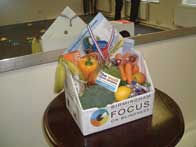 While most optical practitioners are well versed in the impact smoking can have on vision, this one-day conference - cleverly titled 'But will it make me go blind?' - shed light on other health-related choices, such as poor nutrition and excess alcohol consumption, and the ocular damage they can cause.
While most optical practitioners are well versed in the impact smoking can have on vision, this one-day conference - cleverly titled 'But will it make me go blind?' - shed light on other health-related choices, such as poor nutrition and excess alcohol consumption, and the ocular damage they can cause.
Ash Sharma, a Birmingham ophthalmologist, opened the conference with a talk on lifestyle choices and ocular disease. He highlighted the folly of unprotected sex with the examples of HIV/Aids and chlamydia. Advances in the treatment of HIV/Aids had dramatically changed the nature of the associated eye disease.
Register now to continue reading
Thank you for visiting Optician Online. Register now to access up to 10 news and opinion articles a month.
Register
Already have an account? Sign in here
